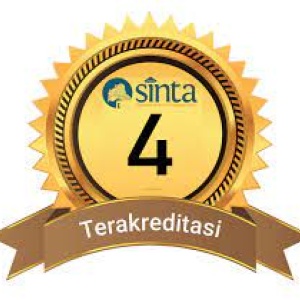Aji Saraswati Merapi-Merbabu: Transformasi Teks Bhimaswarga Sebagai Panduan Ritual Literasi di Gunung Lawu Abad Ke-16
DOI:
https://doi.org/10.37014/jumantara.v14i2.4086Keywords:
Aji Saraswati, Bhima Swarga, Text Transformation, Intertextuality, Ritual Literacy, Merapi-MerbabuAbstract
Aji Saraswati (AS) is a text that contains guidelines for literacy rituals in the Shivaist tradition in Indonesia. In general, the majority of known AS texts originate from the Shivaism tradition in Bali, while the Javanese tradition is not yet widely known. This research discusses AS texts originating from the Javanese tradition, especially the Merapi-Merbabu scriptorium collection. The AS text originating from the Merapi-Merbabu scriptorium is a collection of fragments originating from the hipograms of the text Bhima Swarga (BhS). The aim of this research is to apply intertextuality studies between AS MM texts and BhS as their hypograms. The intertextuality study was then carried out by functional analysis based on the sequences in the hypograms text which were transformed into AS MM text. This research uses a qualitative approach. Philological work steps such as inventory, description, text comparison, text edition, and translation are carried out in this study to produce text editions that can be understood by the wider community. Rifattere's theory of intertextuality (expansion and conversion) and Pradotokusumo (modification and excerpt) is used in this study to determine the hypogrammatic phenomena in AS MM text from hipogram text. The results of this study are that there are eight text sequences that are transformed into AS MM text. The eight transformed sequences include: (1) Position of Goddess Saraswati; (2) Physiological elements (3) Trikaya Paramartha's association with aspects of manuscript production; (4) Position of vowel or swara characters; (5) The essence of the aspect of duality; (6) The Reality of Om Awighnamastu; (7) Literacy ritual spells; and (8) God's association with fire. The entire transformation sequence of hypograms text into AS MM text is a transformation from narrative prose text in strict form to mantra text. The text of the spell in AS MM is used in literacy rituals in the Merapi-Merbabu scriptorium environment.References
Acri, A. Dharma Patanjala: Kitab Saiva dari Jawa Zaman Kuno, Kajian dan Perbandingan dengan Sumber Jawa Kuno dan Sanskerta Terkait. Jakarta: Kepustakaan Populer Gramedia. 2018.
Acri, A. Peneraan Suku Kata (svaravyanjana-nyasa) dalam Tradisi Jawa-Bali Kuno Ditinjau dari Sumber-sumber Tantra Asia Selatan. Dalam Dari Siwaisme Jawa ke Agama Hindu Bali: Kumpulan Tulisan Pilihan Andrea Acri. Jakarta: Kepustakaan Populer Gramedia. 2021.
Baried, S. B. Pengantar Teori Filologi. Jakarta: Pusat Pembinaan dan Pengembangan Bahasa Departemen Pendidikan dan Kebudayaan. 1985.
Behrend, T. E. Katalog Induk Naskah-naskah Nusantara Jilid 4: Perpustakaan Nasional Republik Indonesia. Jakarta: Yayasan Obor Indonesia. 1998.
Danielou, A. Hindu Polytheism. London: Routledge and Kegan Paul, Ltd.
Geria, A. A. G. A. “Aji Saraswati: Tradisi Merapi-Merbabu”. Dalam Prosiding Seminar Nasional Sastra Agama dan Pendidikan Bahasa, Bali, 2018, hlm 1-7, Denpasar: IHDN Press.
Gonda, J. Sanskrit in Indonesia (Vol. 28). Nagpur: International Academy of Indian Culture. 1952.
Gonda, J. Pusan and Sarasvati. Amsterdam: North-Holland Publishing Company. 1985.
Gunawan, A. Bhima Svarga: Teks Jawa Kuno Abad Ke-15 dan Penurunan Naskahnya. Jakarta: Perpustakaan Nasional. 2019.
Hooykaas, C. Agama Tirtha: Five Studies in Hindu-Balinese Religion. Amsterdam: N.V. Noord-Hollandsche Uitgevers Maatschappij. 1964.
Jenkins, R. Saraswati in Bali: a Temple, a Museum, and a Mask. Jakarta: ARMA, The Agung Rai Museum of Art in association with BAB Publishing Indonesia. 2015.
Jumadiah, S. “Kode Etik Memuliakan Lontar: Perspektif Lontar Kamatantra miwah Saraswati”. PRABHAJNANA: Mozaik Kajian Pustaka Lontar Universitas Udayana 3 (2018), 196-209.
Kriswanto, A. Bismaprawa: Transformasi Teks Adiparwa di Skriptorium Merapi-Merbabu. Jakarta: Perpustakaan Nasional RI. 2018.
Kurniawan, A. “Uttarasabda: Suntingan Teks Disertai Telaah Fungsi Teks di Skriptorium Merapi-Merbabu Abad ke-17”. Disertasi doctoral tidak dipublikasikan, Universitas Indonesia, Depok, 2019.
Linus, I. K. “Dewi Saraswati: Arti dan Peranannya: Sebuah Tinjauan Sejarah Kebudayaan”. Widya Pustaka (1991), 73-84.
Pigeaud, T. G. T. Java in the 14th century, a study in cultural history (Vol. V). The Hague: Martinus Nijhoff. 1963.
Pradotokusumo, P. S. Kakawin Gajah Mada: sebuah karya sastra kakawin abad ke-20: suntingan naskah serta telaah struktur, tokoh dan hubungan antarteks. Jakarta: Binacipta. 1986.
Raco, J. R. Metode Penelitian Kualitatif: Jenis, Karakteristik, dan Keunggulannya. Jakarta: Gramedia Widiasarana Indonesia. 2010.
Reynolds, L. D., & Wilson, N. G. Scribes and Scholars: A Guide to the Transmission of Greek and Latin Literature. London: Oxford University Press. 1991.
Rifattere, M. Semiotics of Poetry. London: Indiana University Press. 1978.
Rubinstein, R. Beyond the realm of the senses: The Balinese ritual of kakawin composition. Leiden: KITLV Press. 2000.
Santiko, H. “Mandala (Kadewaguruan) pada Masyarakat Majapahit”. Dalam Pertemuan Ilmiah Arkeologi IV, Cipanas. 1986.
Setyani, T. I. “Struktur, Kategori, Fungsi, dan Peran Mandala dalam Teks Tantu Panggelaran”. Disertasi tidak dipublikasikan, Universitas Indonesia, Depok, 2017.
Setyawati, K., Wiryamartana, I. K., & Molen, W. v. d. Katalog Naskah Merapi-Merbabu Perpustakaan Nasional Republik Indonesia. Yogyakarta: Universitas Sanata Dharma. 2002.
Singhal, S. D. Ganapati-tattwa. New Delhi: IAIC. 1958.
Sudibyo. Filologi: Sejarah, Metode, dan Paradigma. Yogyakarta: Jurusan Sastra Indonesia Fakultas Ilmu Budaya UGM. 2015.
Sulistyanto, B. Menggamit Minat Warisan Budaya Lereng Gunung Lawu. Jakarta: Pusat Penelitian Arkeologi Nasional. 2019.
Supomo, S. “Lord of the Mountains ‘In the Fourteenth Century’ Kakawin”. Bijdragen tot de Taal-, Land-en Volkenkunde, 2/3 (1972), 281-297.
Supomo, S. Arjunawijaya: A Kakawin of Mpu Tantular. The Hague: KITLV Press. 1977.
Van der Molen, W. Kritik Teks Jawa: Sebuah pemandangan umum dan pendekatan baru yang diterapkan kepada Kunjarakarna. Jakarta: Yayasan Pustaka Obor Indonesia. 2011.
Wijayanto, M. H., & Suparta, I. M. (2022). “Symbolical Meanings of Aji Saraswati Text in Javanese and Balinese Shivaism’s Tradition: A Comparative Study”. Jurnal Lektur Keagamaan 20, Nomor 2 (2022), 383-412.
Zoetmoelder, P. J. Kamus Jawa Kuna-Indonesia. Jakarta: PT. Gramedia. 2004.
Zoetmulder, P. J. Kalangwan: Sastra Jawa Kuno Selayang Pandang. Jakarta: Djambatan. 1983.
Downloads
Published
Issue
Section
License
Copyright (c) 2023 Muhammad Heno Wijayanto, I Made Suparta

This work is licensed under a Creative Commons Attribution-ShareAlike 4.0 International License.
- This statement is the author's commitment to respect copyright, both in terms of citing other people's work and utilizing journal content. If necessary, the author can send an Authenticity Statement of Article stating that "this work is the author's original idea and has never been sent to another publisher and published in any publication"
- The author retains copyright.
- The moral rights of publication belong to the author.
- Formal legal aspects in the use of journal publications refer to the Creative Commons Attribution-ShareAlike 4.0 (CC BY-SA) license, which means that journal content can be used freely for any purpose.









